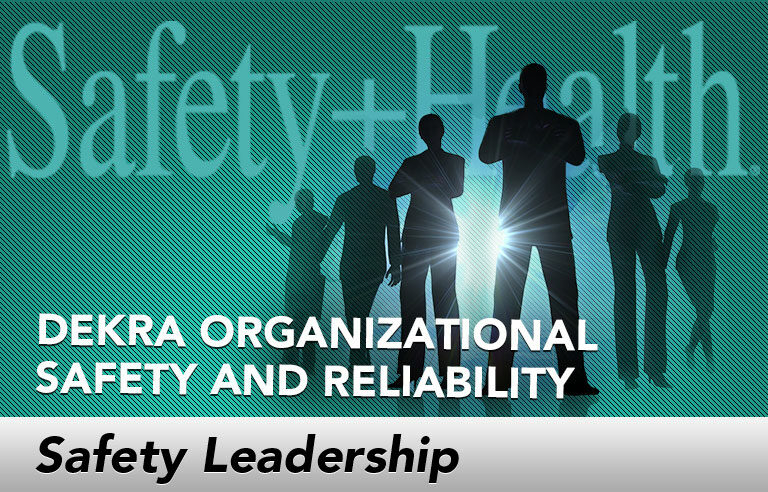Safety Leadership: How much time ‘should’ leaders spend on safety?

Editor’s Note: Achieving and sustaining an injury-free workplace demands strong leadership. In this monthly column, experts from global consulting firm DEKRA Insight share their point of view on what leaders need to know to guide their organizations to safety excellence.
While working with a client recently, we were posed the oft-asked question, “How much time should a leader spend on safety?”
In this case, the question specifically was asked regarding senior leadership. As with most seemingly simple questions, the answer is more complex.
What we know is, in a high-functioning organization, senior leadership doesn’t quantify the time spent on safety. Instead, leaders incorporate safety into everything they do. This is how they demonstrate safety as a core value.
They have the expertise and infrastructure in place to handle “safety management” and focus their energy on sponsoring safety. Although these leaders integrate safety into what they do, they still designate time specifically for safety activities such as attending governance meetings, speaking at significant safety recognition milestone events, and attending meetings to discuss significant incidents or the potential for serious injury and fatality events.
One important point to understand in answering this question is where the organization is on its safety journey. An organization that is at the “avoidance” level and has a desire to move up to the “compliance” level needs to significantly increase time spent on safety at all leadership levels. It also needs a mix of both management and leadership activities. Moving from the “compliance” level to the “values” level likely will require a similar increase in time, however, with a shift from tactics to strategic leadership, especially for senior leadership. At the “world class” level, it might be difficult to pinpoint the actual amount of time spent on safety because it’s so ingrained into everything the leaders do.
As we considered our response to the original query, we thought of the broader question of how much time leaders – at any level – should spend on safety. We concluded that, for leaders closer to the work, there would be a higher amount of dedicated time spent on safety. Think about it as a triangle, where the base of the triangle is the front-line leader and the top is the executive leadership. We know that in organizations in which safety is a value, front-line leaders designate time for:
- Conducting job briefings.
- Inspecting for hazards and exposures.
- Verifying lifesaving processes are understood and followed by all employees.
- Engaging employees in discussions to uncover barriers to safe work.
Although each level above the front-line leader would have dedicated safety activities, the time commitment would decrease.
Sure, the leader who asked the original question most likely would have been satisfied with a simple answer such as, “You should be spending 10 percent of your time on safety,” but it just wasn’t the right answer. Sometimes simple questions deserve a simple answer, but not this one. In this case, the leader engaged in a robust discussion that caused the leadership team to think differently about values, safety and how it should think about its role as a safety leader.
This article represents the views of the authors and should not be construed as a National Safety Council endorsement.
 Don Groover, CIH (retired), CSP, is senior vice president with DEKRA Organizational Safety and Reliability. Groover develops solutions that leverage the latest technology to improve safety performance in client organizations.
Don Groover, CIH (retired), CSP, is senior vice president with DEKRA Organizational Safety and Reliability. Groover develops solutions that leverage the latest technology to improve safety performance in client organizations.
 Rick Smith is senior vice president at DEKRA Organizational Safety and Reliability. Smith has more than 40 years of progressive safety leadership experience. He works with senior leadership to design and execute strategic culture and safety change initiatives.
Rick Smith is senior vice president at DEKRA Organizational Safety and Reliability. Smith has more than 40 years of progressive safety leadership experience. He works with senior leadership to design and execute strategic culture and safety change initiatives.
Direct to your inbox: Sign up to be notified in email about new "Safety Leadership" columns.
Post a comment to this article
Safety+Health welcomes comments that promote respectful dialogue. Please stay on topic. Comments that contain personal attacks, profanity or abusive language – or those aggressively promoting products or services – will be removed. We reserve the right to determine which comments violate our comment policy. (Anonymous comments are welcome; merely skip the “name” field in the comment box. An email address is required but will not be included with your comment.)

